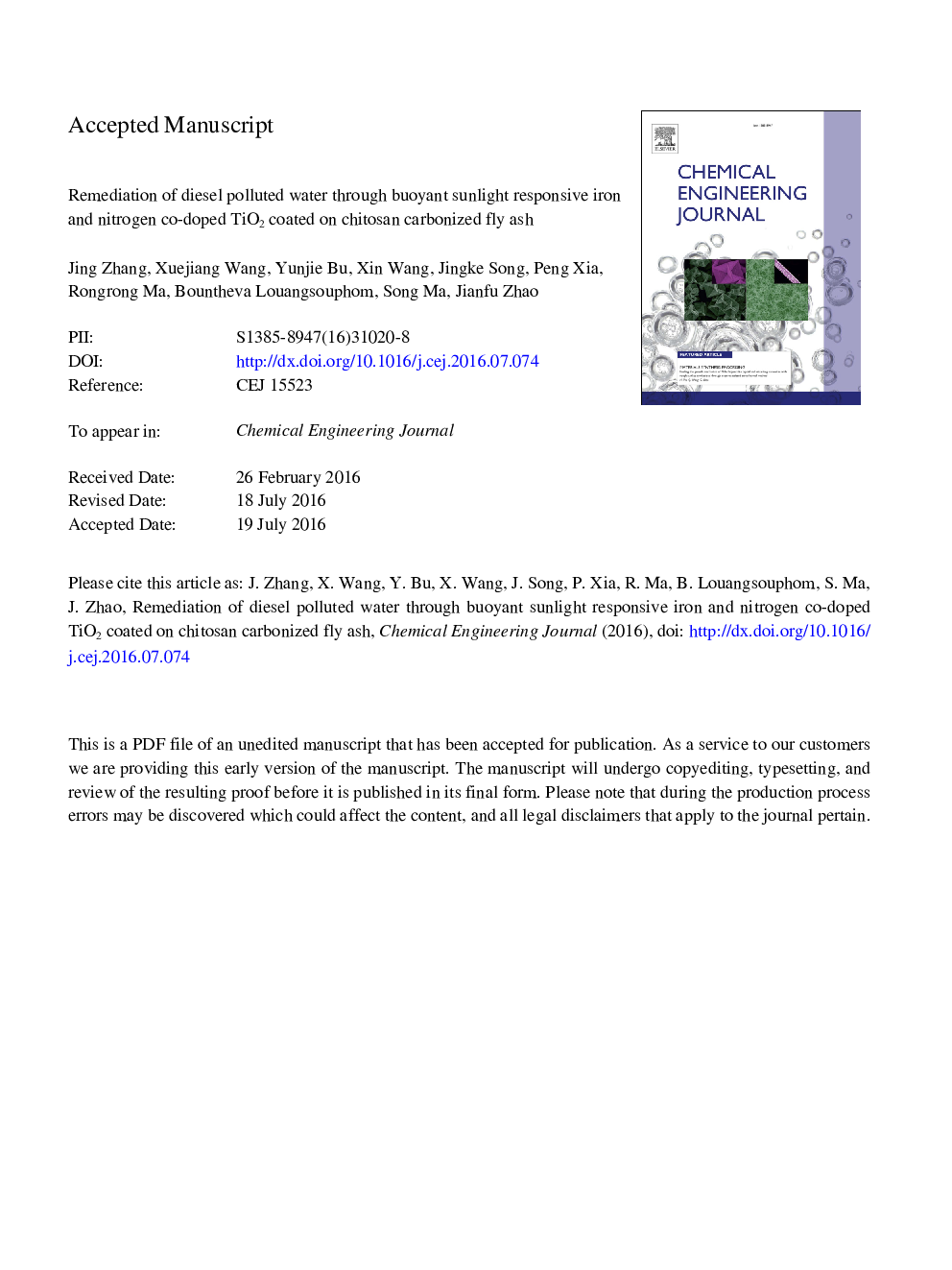| Article ID | Journal | Published Year | Pages | File Type |
|---|---|---|---|---|
| 145289 | Chemical Engineering Journal | 2016 | 26 Pages |
Abstract
With growing demand of oil, the increasing water oil pollution incidents have brought tremendous harm to the water and human health. Floating photocatalytic system under visible light was introduced as an effective remediation with low cost. Chitosan carbonized fly ash (FAC-CS) was used as a buoyant substrate to carry iron, nitrogen co-doped TiO2 through the sol-gel method. The Fe-N-TiO2/FAC-CS was characterized by X-ray diffraction (XRD), scanning electron microscopy (SEM), nitrogen adsorption-desorption isotherms, UV-vis diffuse reflectance spectroscopy (UV-vis-DRS), Photoluminescence (PL) spectra, X-ray photoelectron spectra (XPS) and thermal gravimetric analysis (TGA). Compared with N-TiO2/FAC and Fe-N-TiO2/FAC, the results showed that Fe-N-TiO2/FAC-CS exhibited a higher photocatalytic degradation remove rate (53.6%) for diesel under visible light. This is attributed to the synergistic adsorptive-photocatalytic effect: Modification by chitosan favors of improving specific surface area to increase adsorption capacity for diesel; Buoyant on the surface of water could fully use the sunlight especially in the visible light range. Through the study of kinetic reaction and remove rate, it could be found that adsorption is prerequisite for the improved diesel degradation during photocatalysis under visible light.
Related Topics
Physical Sciences and Engineering
Chemical Engineering
Chemical Engineering (General)
Authors
Jing Zhang, Xuejiang Wang, Yunjie Bu, Xin Wang, Jingke Song, Peng Xia, Rongrong Ma, Bountheva Louangsouphom, Song Ma, Jianfu Zhao,
